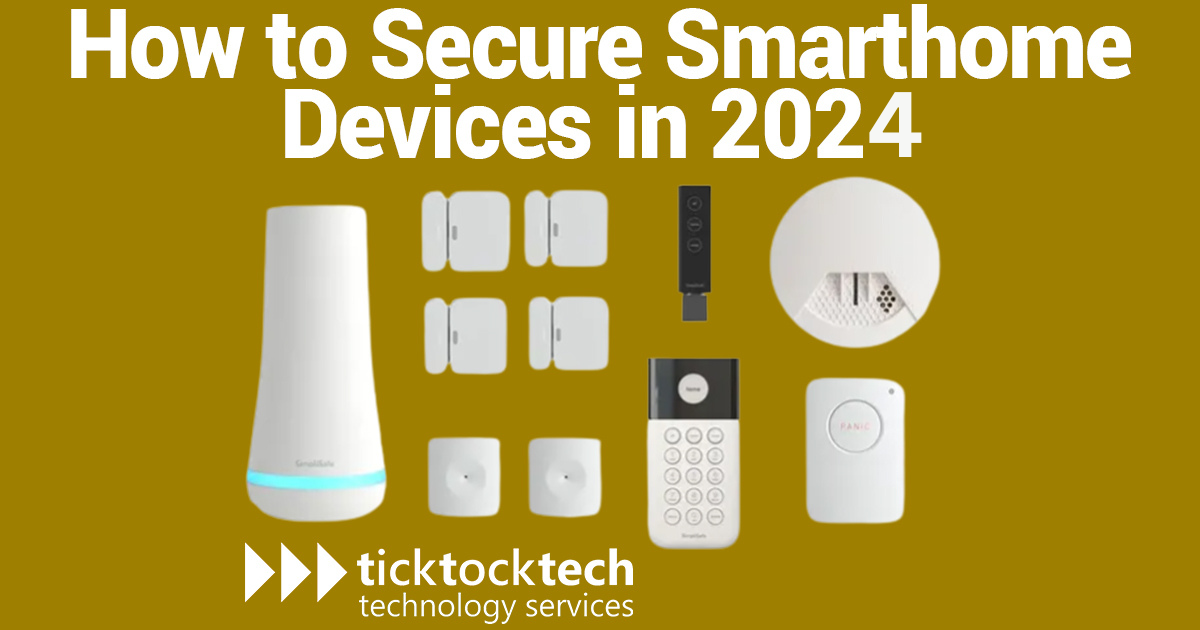As we continue to adopt more smart home devices to ease our tasks, we must realize these devices pose potential security risks. Unsecured smart home devices can be attacked by hackers, exposing you to potential risks like identity theft or home invasion. However, you can stay protected by following the simple guidelines in this article to keep your home secure. Keep reading to learn how to secure your smart home devices.
What are the risks of unsecured smart home devices?
Smart home devices have become popular in recent years because of their convenience. However, smart home devices also come with the risk of cybersecurity threats. Unsecured smart home devices pose several risks, some of which include:
- Data theft: Smart home devices can save sensitive information, including passwords, credit card details, and personal data. If these devices are not well secured, hackers can easily access information.
- Device hijacking: Another significant risk of unsecured smart home devices is device hijacking. Device hijacking occurs when hackers gain control of your smart home devices and use them for malicious reasons.
- Remote monitoring: Unsecured smart home devices are vulnerable to remote monitoring by hackers. Hackers can spy on your devices and watch everything happening in your home if your smart home devices are not secured.
- Botnet attacks: Unsecured smart home devices are vulnerable to botnet attacks. A botnet is a network of devices infected with malicious software controlled by hackers. Botnets are used for malicious purposes, like Distributed Denial of Service (DDoS) attacks, spamming, or data theft.
Secure Your Smart Home with These Important Tips
Below are the five most important tips to secure your smart home devices from potential threats. Maximize the convenience of your smart home gadgets without sacrificing your privacy and personal data by following these expert tips:
Change default usernames and passwords
Changing default usernames and passwords is a big step in securing your smart home devices. Default credentials are often easily guessed or publicly available, making them vulnerable to hacking attempts. To change your default login credentials, consult the device manual or manufacturer’s website for instructions, use a strong and unique password, use a different password for each device, and consider using a password manager. Changing passwords periodically can also reduce the chances of being compromised.
Enable multi-factor authentication
After protecting your smart home device with strong usernames and passwords, enabling multi-factor authentication is important. This feature requires you to provide different forms of identification to access your device. Multi-factor authentication provides an extra layer of security, making it difficult for hackers to access your device. For instance, if a hacker obtains your password, they would still need another form of identification to access your device. To enable multi-factor authentication, check the manual or manufacturer’s website for instructions on how to do it.
Update your devices regularly
Devices are vulnerable to security risks when their software is outdated. Outdated software in smart home devices can leave them vulnerable, exposing them to potential cyber-attacks. Updates do not only improve the performance of your smart home devices but also contain security patches that help protect them from potential cyber threats. To update your smart home device, consult the manual or manufacturer’s website for instructions specific to your device. The update process may vary depending on the device.
Set up a guest network
Creating a separate guest network is an important step in securing your smart home devices. A guest network is a separate Wi-Fi network specifically for visitors, allowing them to connect to the internet without accessing your main network. You can change the guest network’s password regularly to keep it secure. This a simple solution that comes with most routers, giving you peace of mind when entertaining guests.
Disable unnecessary features
Disabling unnecessary features can block potential entry points and enhance your smart home security. Many smart home devices come with features you may not need or use. Disabling unnecessary features will reduce the attack surface of your devices, making it more difficult for hackers to find vulnerabilities. To disable unnecessary features, check the manual or manufacturer’s website for instructions on how to do it. Many devices have these features listed in their settings, where you can turn them off.
Conclusion – How to secure smart home devices in 2024
As we acquire our smart home devices, we must prioritize their security. Unsecured smart home devices are vulnerable to malicious attacks that are harmful. To stay protected, it’s crucial to follow the practices like changing default usernames and passwords, enabling multi-factor authentication, regular software updates, setting up a guest network, and disabling unnecessary features.

